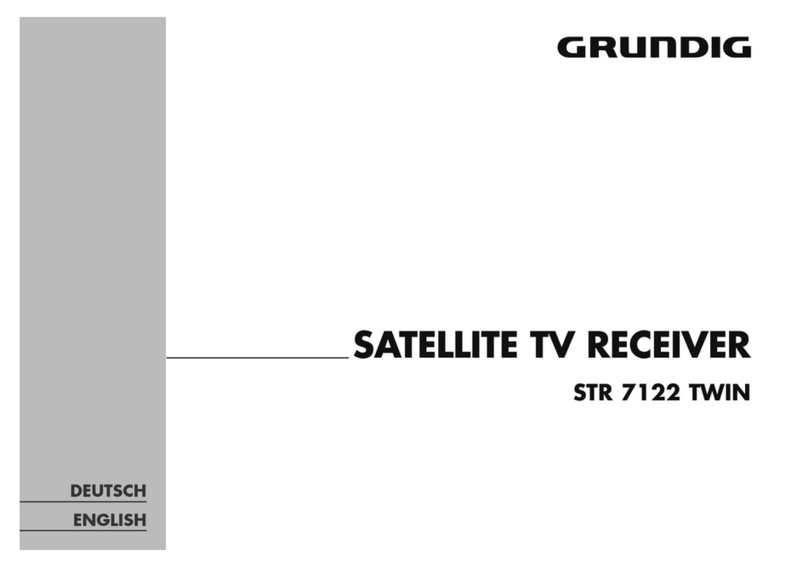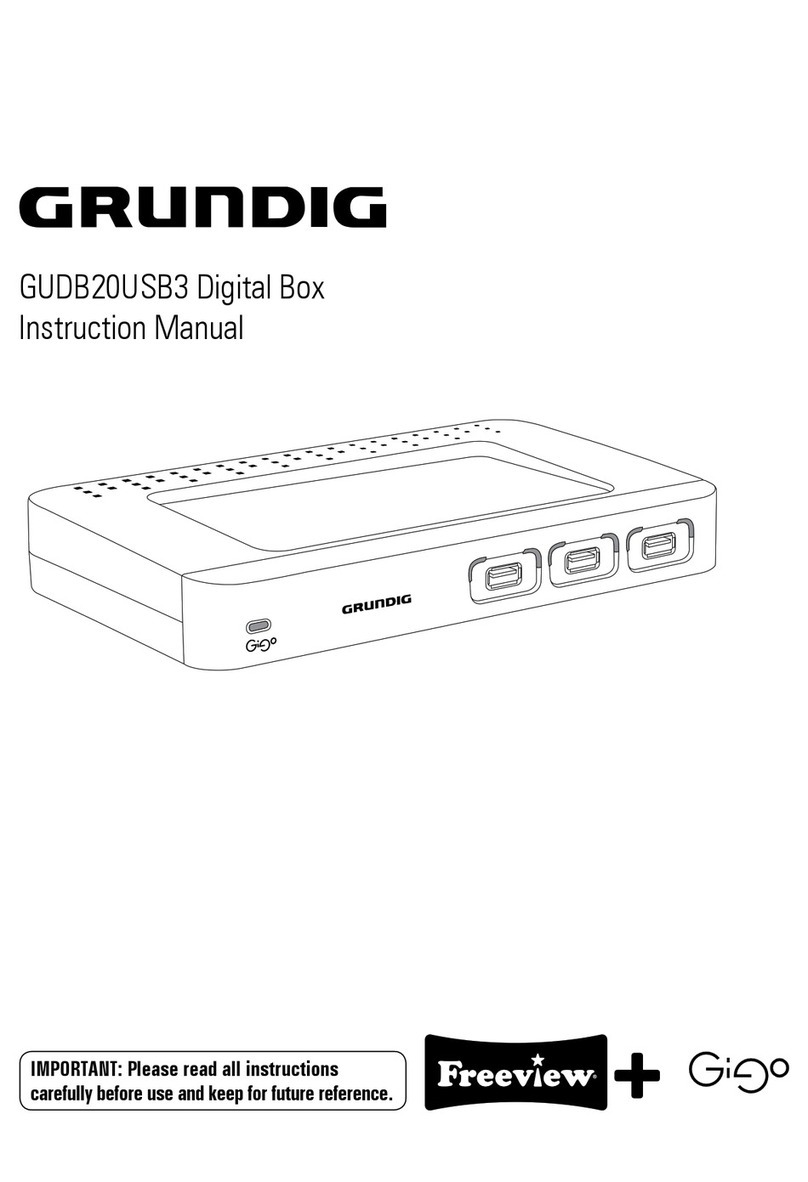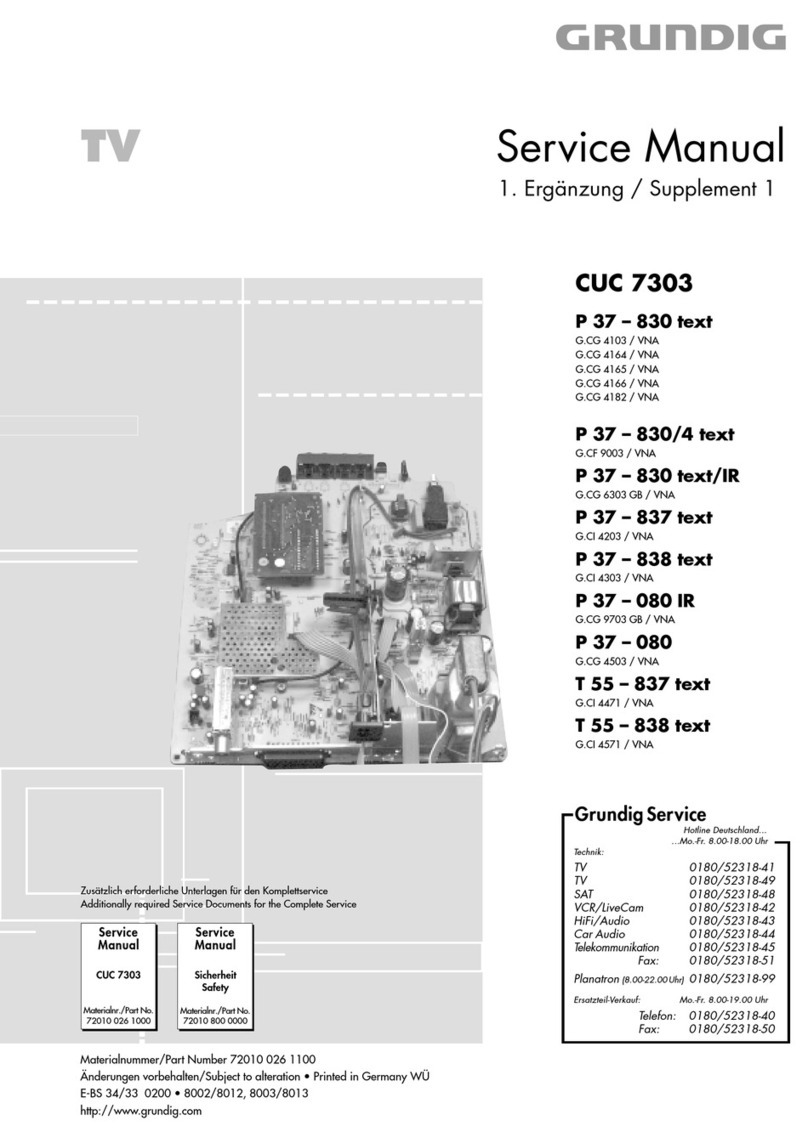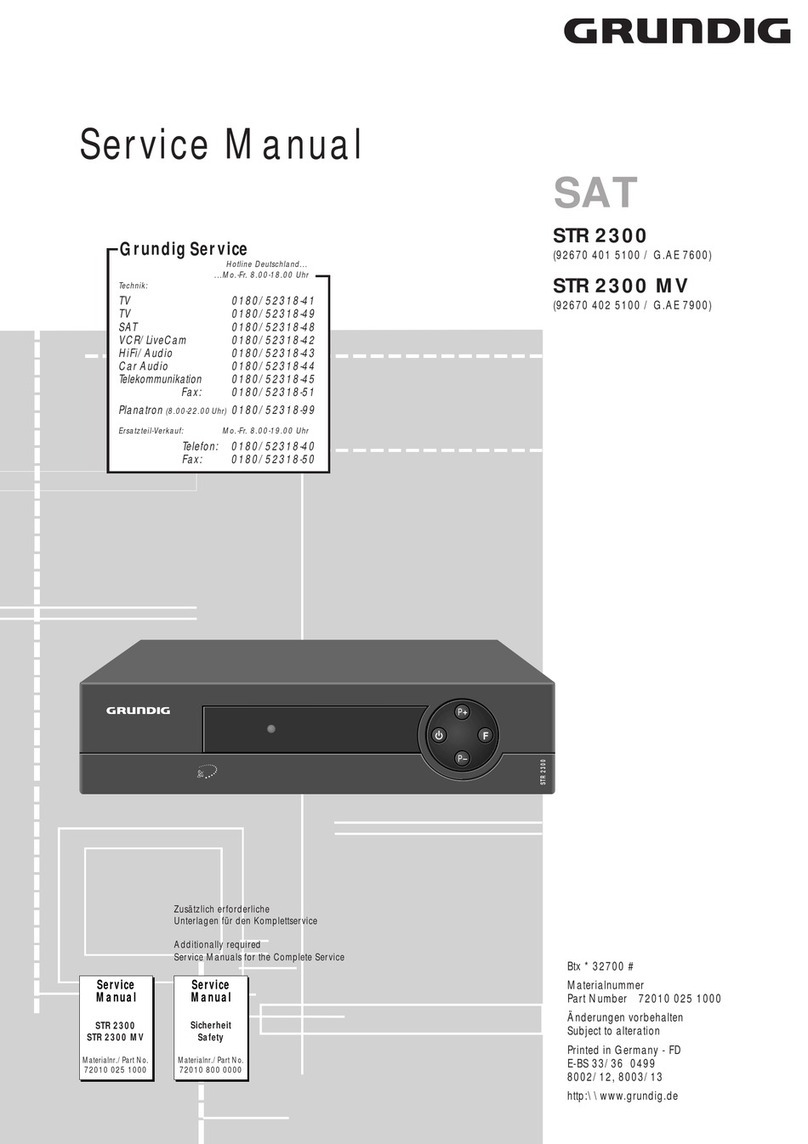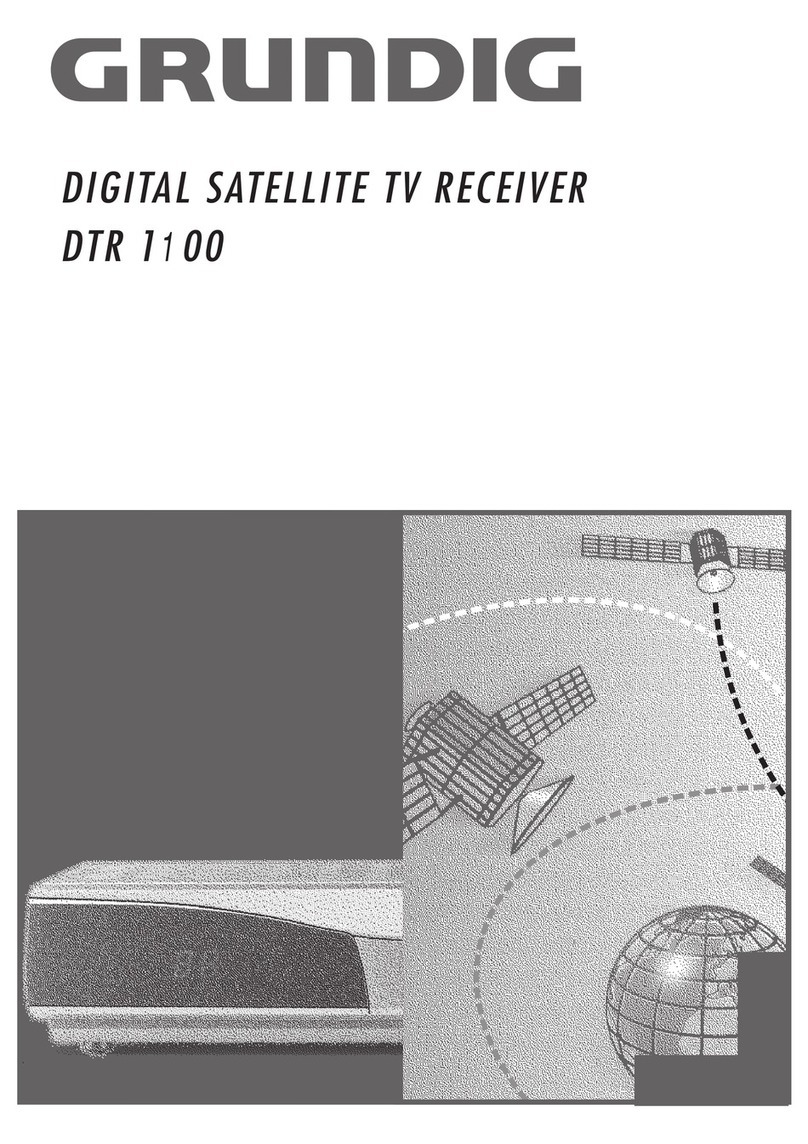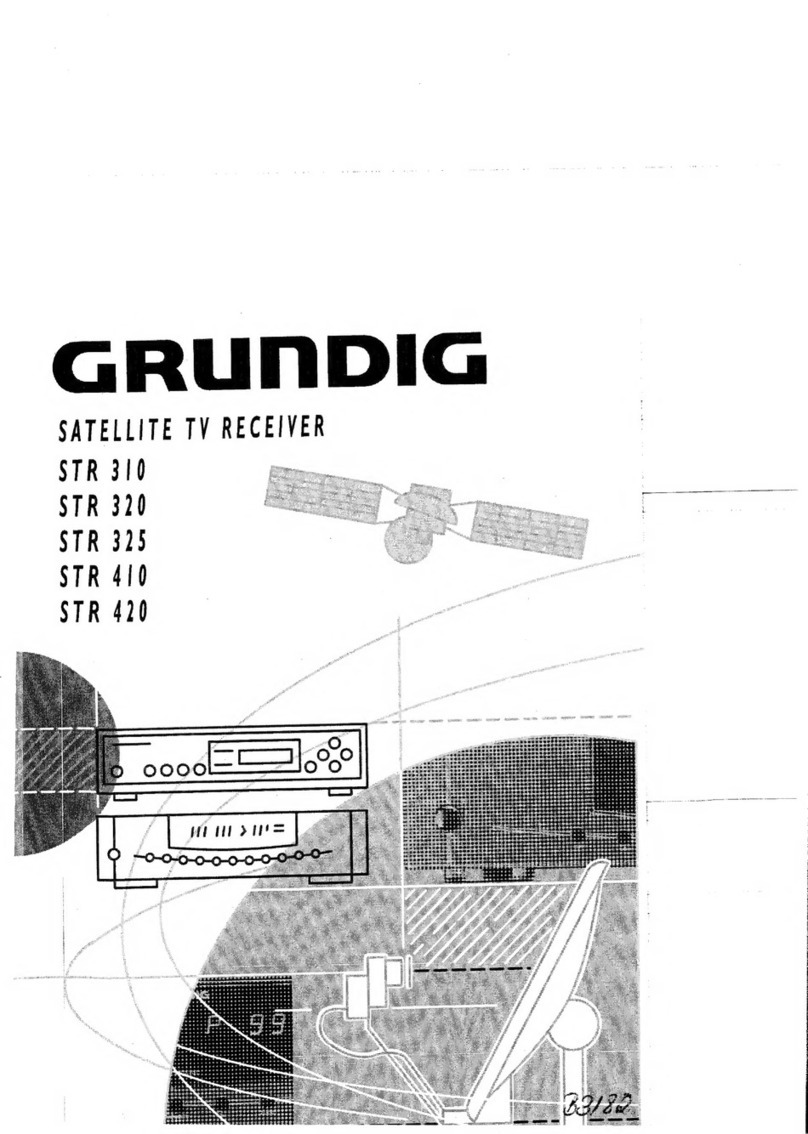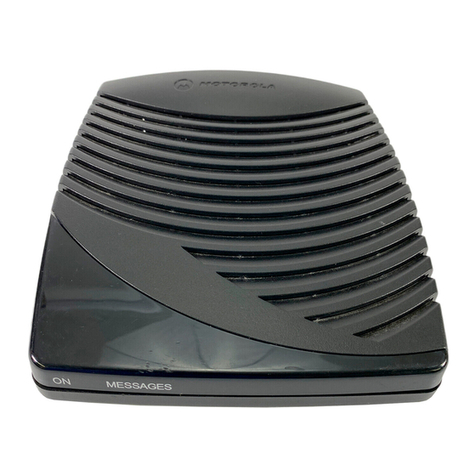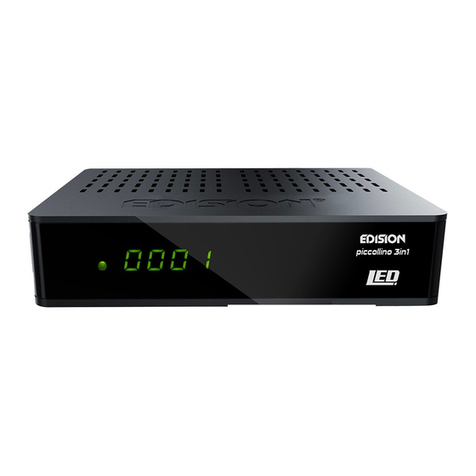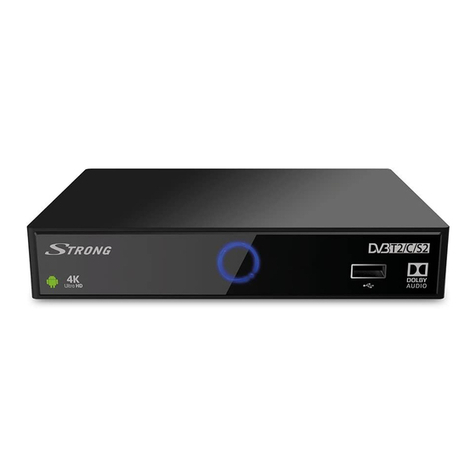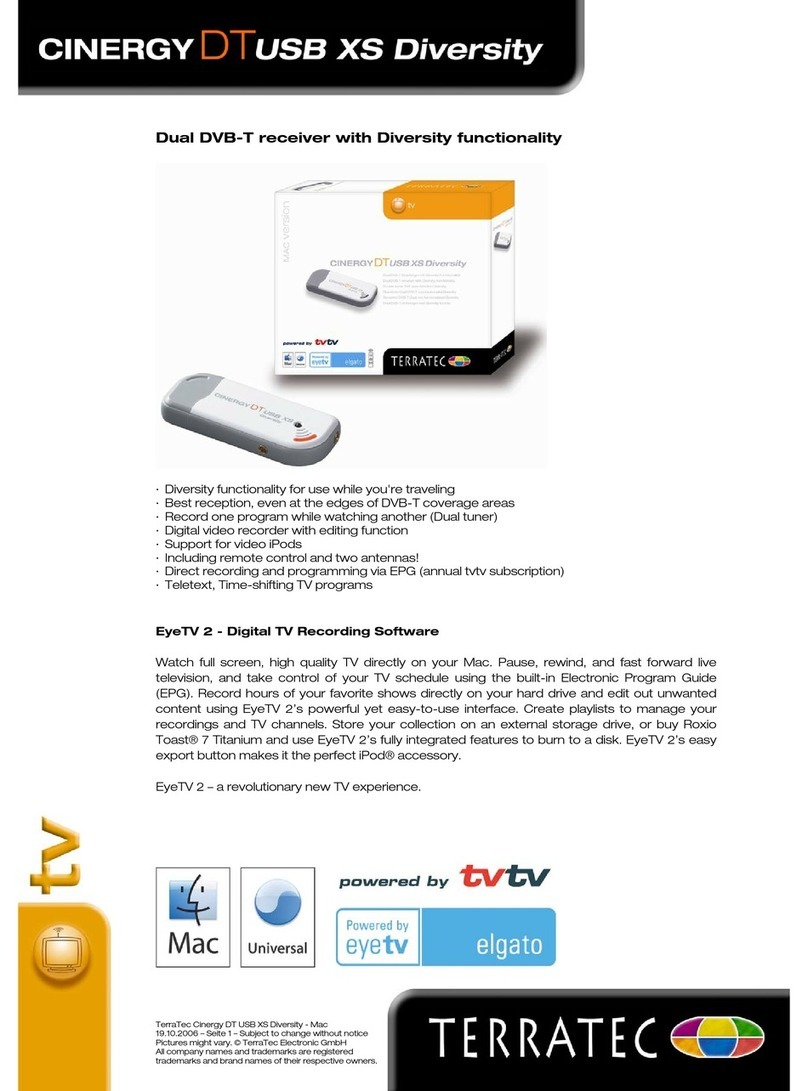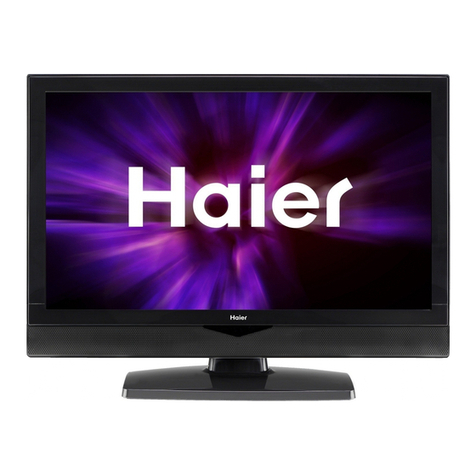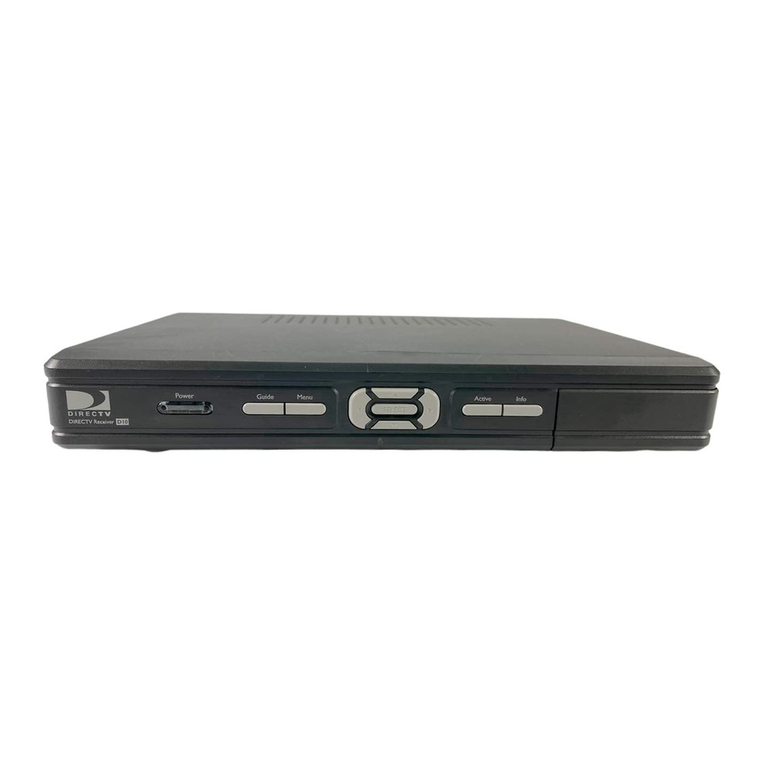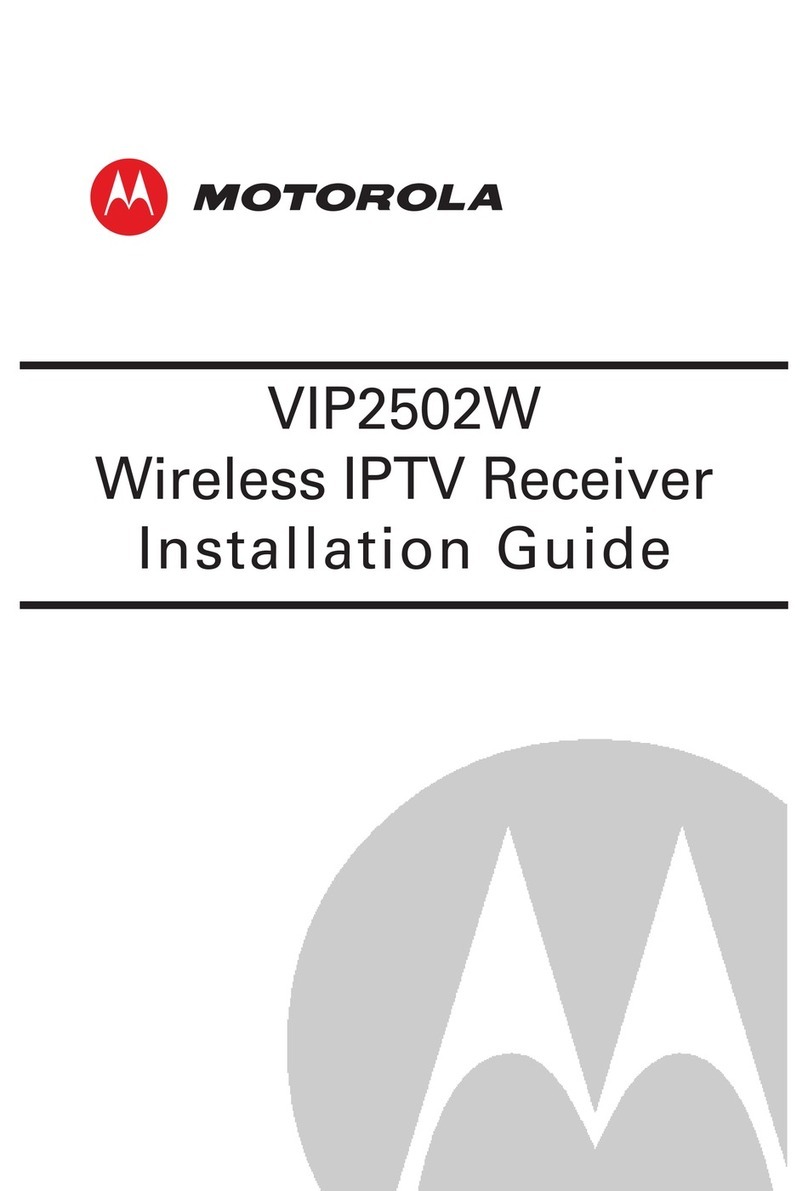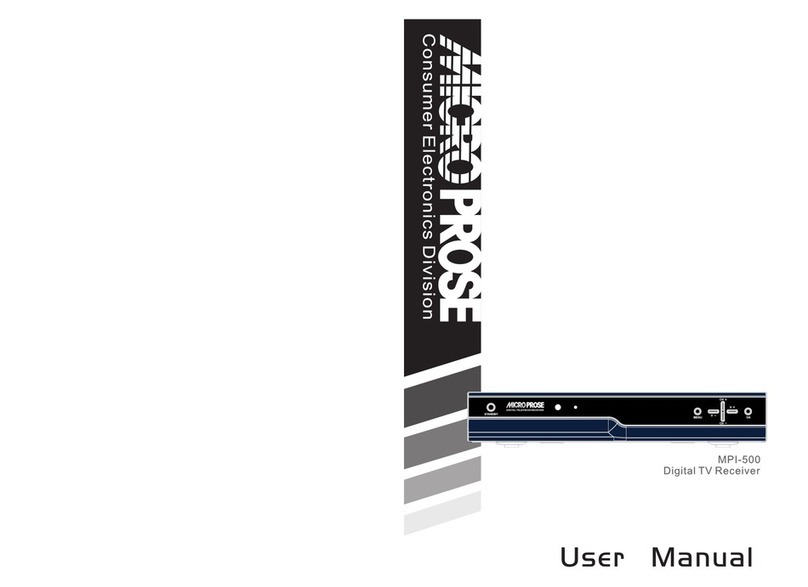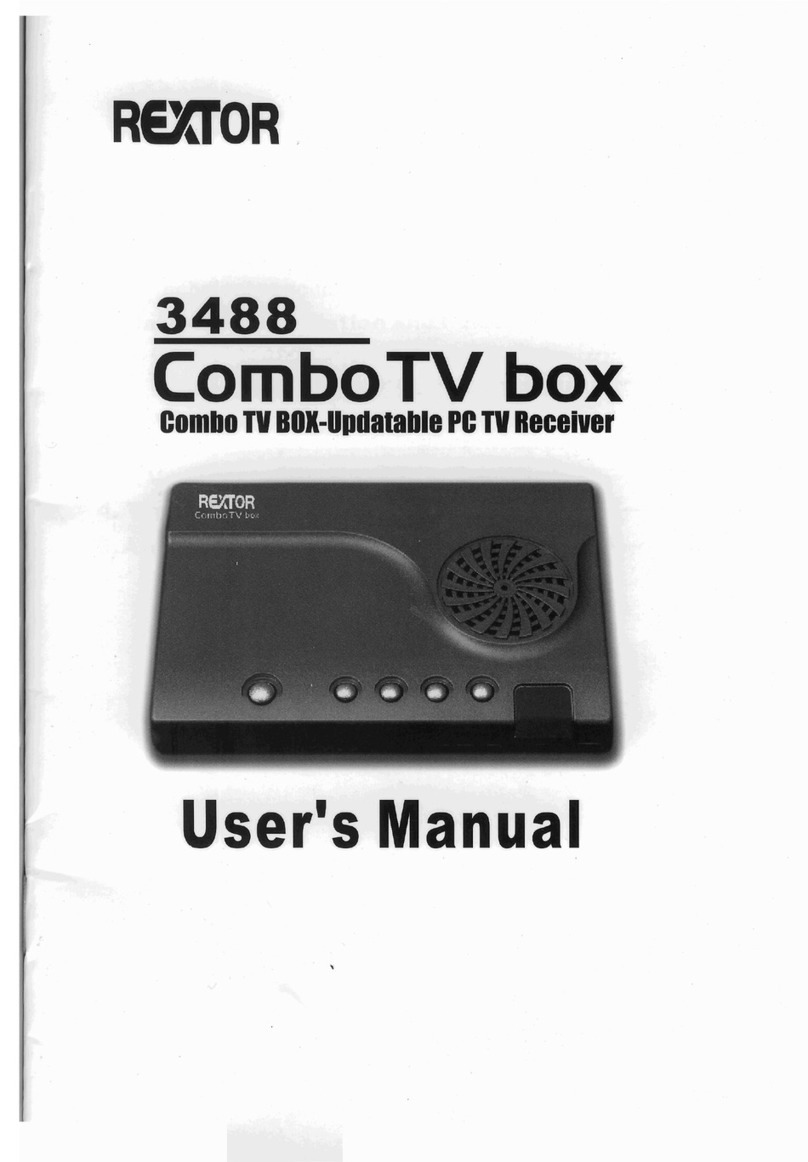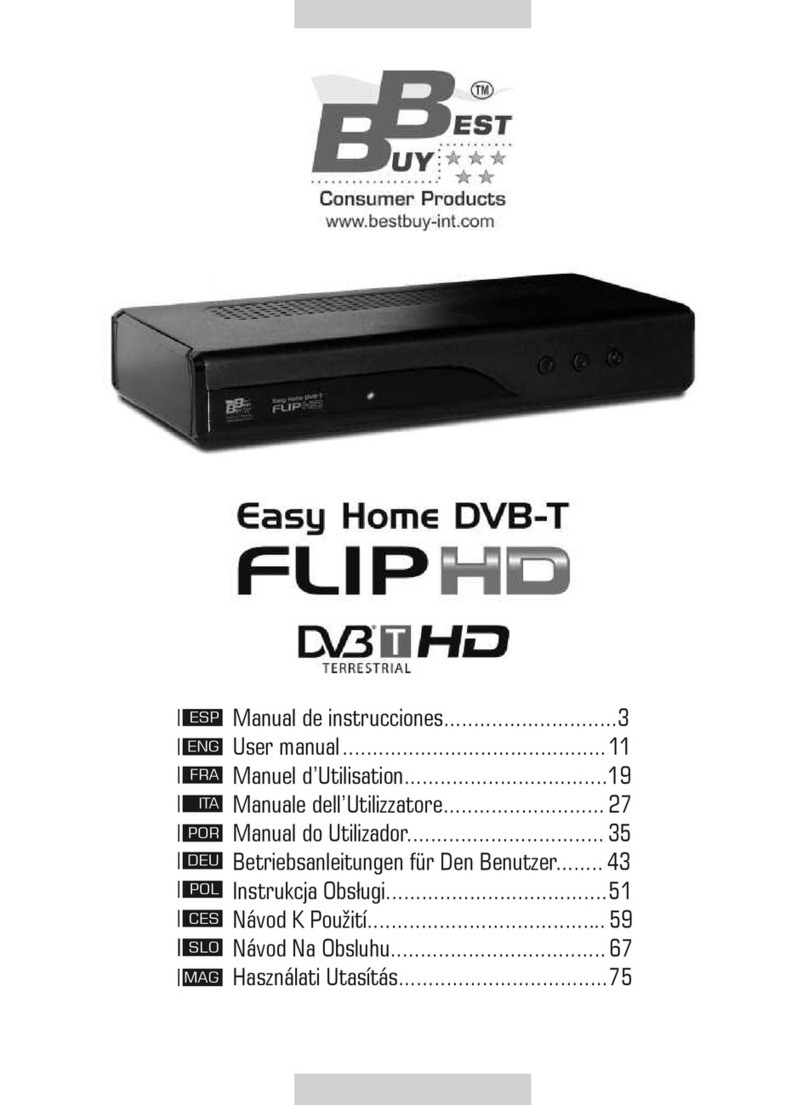
STR 110 microSAT Allgemeiner Teil / General Section
GRUNDIG Service 1 - 5
TST_DO
Taste abwärts / Push button down / Button-poussoir descendant /
Tasto verso il basso / Pulsador hatia abajo
TST_UP
Taste aufwärts / Push button up / Button-poussoir montant /
Incremento del tasto / Pulsador hatia arriba
VDR Freigabe Anzeigebaustein / Display enable / Autorisation pour
module indicateur / Modulo indicazione / Habilitacion modulo
indicacion
VIDEO Video-Signal / Video signal / Signal vidéo / Segnale video / Señal
video
VIDEO
DEEMPH
Schaltspannung Video Deemphasis / Switching voltage video de-
emphasis/Tens.commutvideodeenfasi/Tens.dicommutaz.video
selez. della fase audiodem / Tens. conmut. video deenfasi
VID/DEC
Video-Signal-Decoder / Video signal-decoder / Signal vidéo-
decodeur / Segnale video-decoder / Señal video-decoder
VS
Video Sync-Erkennung / Video Sync idendification / Video Sync
identfication / Sync video identificazione / Identificacion Sync video
V Sync.
Vertikal - Sync / Vertical Sync / Sync. verticale / Sinc. Verticale /
Vertical - Sincron.
YY-Signal / Y-signal / / Signal Y / Segnale Y / Señal Y
ZF ZF-Signal / IF Signal / Signal FI / Segnale FI / Señal de FI
UAFC Regelspg. AFC / AFC contr. volt. / Tens. de regul. AFC / Tens. di
contr. AFC / Tens. regul. CAF
UAV
Schaltspg. AV / Switching volt. AV / Tens. de commut. AV / Tens. di
commut. AV / Tens. conmut. AV
UDEEM
Schaltspannung Deemphasis / Switching voltage de-emphasis /
Tens.commutdeenfasi/Tens.dicommutaz.selez.dellafasedem /
Tens. conmut. deenfasi
U
EU-AV
CINCH
Schaltspg. Euro-AV-Buchse-Cinch Buchse / Euro-AV socket swit-
ching volt.- phono socket / Tens commut. prisa scart-cinch / Tens.
commut. presa scart - cinch / Tens. conm. Euro-AV-Cinc.
UHUB
Schaltspg.Hub/ Switchingvolt.deviation/Tens.commut.deviation
/ Tens. commut. deviazione / Tens. conmut. deviacion
ULIN
Schaltspg.linear/Linearswitchingvolt./Tens.decommut.lineaire /
Tens di commut. lineare / Tens. de conmut. de linea
ULNC
ULNC A
ULNC B
Schaltspannung für "LNC-Power" / Switching voltage for "LNC-
Power" / Tens de commut pour "LNC-Power" / Tens. di commut per
"LNC-Power / Tens. de conmut para "LNC-Power"
U
LNC
OFF
Schaltspg. LNC aus / Switching volt. LNC off / Tens. commut. LNC
arrêt / Tens. commut. LNC spento / Tens. de conmut. LNC
desconectado
UMAC
Schaltspg.MAC/Switchingvolt.MAC /Tens.commut. MAC/Tens.
commut. MAC / Tens. de conmut. MAC
U
MONO
SCHMAL
Schaltspg. Mono schmal / Mono narrow switching volt. / Tens. de
commut. Mono etroite / Tens di commut. Stretta / Tens. de conmut.
Mono estecho
UMUTE
Stummschaltung / Muting / Silencieux / Silenziamento / Muting
SchaltspannungTon-Normen/ Switching voltage soundstandarts /
Tens. de comm. de normes / Tens. di commutaz. audio-norme /
Tens. conmut. normas sonido
UOST
Schaltspg. für Motorlauf Ost / Switching volt. for motor run east /
Tens de commut. pour course moteur est / Tens. di commut. per il
funz.delmotoreversoest/Tens.deconmutacionparalamarchadel
motor este
UPAL /
BB
Schaltspg. PAL-Basisband-Signal / Switching volt. PAL-baseband
signal / Tension commut. bande de PAL-base signal / Tens.
commut.polarita segnaledi PAL-bandabase /Tens. conmutbanda
PAL-base señal
UPOL.
Schaltspg. Polarität / Switching volt. polarity / Tension commut.
polarité / Tens. commut. polarita / Tens. conmut polarizacion
UREL
Schaltspg. Relais / Switching volt. relay / Tens. commut. relais /
Tens. di commut. rele / Rele de tens. de conmut.
U
RESET
Schaltspg."Reset"/Switchingvolt."Reset"/Tens.commut."Reset"
/ Tens. commut. "Reset" / Tens. conmut. "Reset"
URGB
Schaltspg. RGB / Switching voltage RGB / Tens. de commut. RVB
/ Tens. commut. RVB / Conmut. de RVB
URGB
TV
Schaltspg.RGB-TV/SwitchingvoltageRGB-TV/Tens.decommut.
RVB-TV / Tens. commut. RVB-TV / Conmut. de RVB-TV
USF
Schaltspg. Sonderfunktion / Special function switching volt./ Tens.
de commut. fonction speciale / Funz. speciale della tens. di com-
mut. / Tens. de conmut. function especial
USCRA
Schaltspg.Descrambler/ Descramblerswitchingvoltage /Tens.de
commut. descrambrouilleur / Tens. di commut. rivelatore / Tens. de
conmut. descrambler
U
STAND
BY
Schaltspg. Stand By / Switching volt. Stand By / Tens. commut.
Veille / Tens. commut. Stand By / Tens. conmut. Stand By
UStereo
Schaltspg.Stereo/Stereoswitchingvolt./Tens.decommut.Stereo/
Tens. di commmut. Stereo/ Tensión de conmut. Stereo
USYNC
INT
SchaltspannungZwangssynchronisation /Switching voltageforced
synchr. / Commut. sync. oblig / Tens. di commutaz. sincr. forzata /
Synchron. de tensión de conmut.
UTUN.
Abstimmspg.Tuner/Tuningvolt.tuner/Tens.d'accordtuner/Tens.
di sintonia tuner / Tens. sintonia tuner
UWEST
Schaltspg. für Motorlauf West / Switching volt. for motor run west /
Tens de commut. pour course moteur ouest / Tens. di commut. per
il funz. del motore verso ovest / Tens. de conmutacion para la
marcha del motor oeste
UW/N
Schaltspg.ZF breit-schmal/IF switchingvolt.wide-narrow /Tens.
commut. FI large - etroit / Tens. commut. FI larga - stretta / Tens. FI
ancho - estrecho
U14 V
18 V
Schaltspg. 14/18V / 14/18V switching volt. / Tens. de commut. 14/
18V / Tens. di commut. 14/18V / Tens. de conmut. 14/18V
U
22kHz
22kHz Schaltspg. / 22kHz switching volt. / Tens. commut. 22kHz /
Tens. commut. 22kHz / Tens. de conm. 22kHz
0 / 12 V
0/12V Schaltspg. / 0/12V switching volt. / Tens. commut. 0/12V /
Tens. commut. 0/12V / Tens. de conmut. 0/12V
0/3/6/9V
0/3/6/9VSchaltspg./0/3/6/9Vswitching volt./Tens.commut.0/3/6/
9V / Tens. commut. 0/3/6/9V / Tens. de conm. 0/3/6/9V
22kHz
22kHz Umschaltfrequenz / 22kHz switching frequency / Frequence
de commut. 22kHz / Commut. frequenza 22kHz / Frecuencia de
conm. de 22kHz
U
Motor
Versorgungsspg. Motor / Positioner motor supply volt. / Tens.
d'aliment. moteur de positioneur / Tens. di aliment. del motore
posizionatore / Tens. de alimentacion motor posicionador
Klemmung Ein-Aus / Clamping On-Off / Clampage Marche-Arrêt /
Clamping Ins.-Disins. / Clamping Enc.-Apag.
OUT
Pulse für Polarotor / Pulses for Polar-Rotor / Impulsions Rotor de
Polariastion / Impulsi per Rotore Polarizzazione / Impulsos dara
Polarrotor
IN
Eingangsimpulse vom Positioner-Motor / Input signal from positio-
ner motor / Signal d'entrée moteur de positioneur / Segnale
d'ingrossodalmotoredelposizionatore/Señaldeentradadelmotor
posicionador

